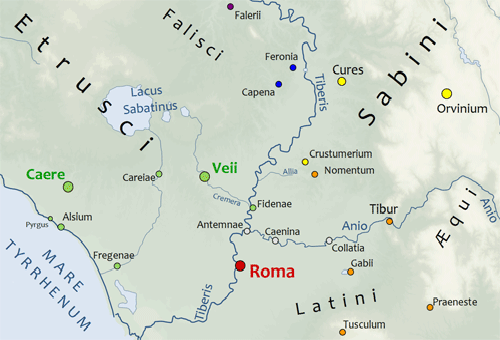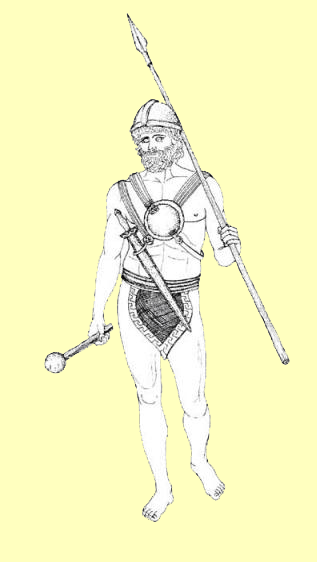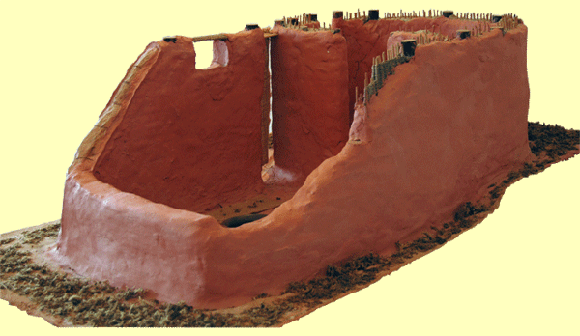and information on the territory
|
I SABINI, hints of history
and information on the territory |
|
|
The Sabini fall within the group of the central southern Italic peoples of the Tuscan-Umbrian language, settled on horseback in the Abruzzo Apennines between the valleys of the Aterno and Nera rivers. Cato in the Origines, tracing the history of Rome, in which the Sabines had a fundamental role, had narrated their origins from Sabo. From Testruna, near Amiternum, they had penetrated the Rieti basin, occupied by the Aborigines, a population of Greek origin, overlapping with them. Strabo said that both the Picenes, settled on the Adriatic side of the peninsula, and the Samnites and Lucanians had originated from the Sabines. From the Rieti basin, beyond the Sabine Mountains, they would have sent the settlers to the Tiber plain to found cities without walls in which they lived. Among these "Cures" the historical capital of Sabina Tiberina. The Sabines of the Tiber occupied, therefore, the whole territory on the left bank of the river, delimited by the Sabine Mountains, the Tiber and the rivers Nera and Aniene. The sources tell us the names of some Sabine cities: Cures, Eretum, Trebula Mutuesca and Forum Novum. |
 |
 |
The research has
identified some archaeological areas: the remains of the ancient Cures,
the necropolis of Colle del Forno, pertinent to the city of Eretum, the
large necropolis of Poggio Sommavilla, the center of Magliano with the
burial grounds and the necropolis of Otricoli.Le vie followed in the
descent towards the Tiber valley, were those marked by the valleys of
the Velino and Nera rivers by the valley bottom roads and by the path of
what later became the Via Salaria, through which, the inland populations
were supplied with salt at the mouth of the Tiber. Strabo, referring to previous testimonies, says that the Romans first felt the benefits of wealth when they became lords of this people. The Sabini Tiberini developed a national script, modeled on the southern Etruscan, but with their own innovations. This writing is documented in the second half of the 7th century BC by the miniature flask of Poggio Sommavilla and by the fragments inscribed, from the necropolis of Giglio di Magliano Sabina. Unanimous opinions define as italic the language used in the two registered texts, with the possibility of connecting with the south piceno also on the basis of a common alphabetical tradition. The image that the archaeological research has given us of the Sabines of the Tiber is that of a group largely involved in the processes of cultural and economic transformation that occurred in the Tiber basin during the VIII and VII century BC. By reworking the influences from the Etruscan world the Sabines developed a culture of their own, which spread to the territories of the Adriatic side. The Museo di Magliano gives a testimony of this. |
|
Canneto Sabino is located to the north of the area where in the Archaic period there was the built-up area of Cures Sabini, center of the Sabina civilization of which we have already the first information between the end of the IX and the beginning of the VIII century a.c This civilization although it existed much earlier than the Roman one, owes its disappearance to the same. In fact after the definitive defeat of the Sabines by the Roman consul Manio Curio Dentato in 290 BC the Sabine territory was integrated to all effects both political and social to the nascent Roman state. The birth of Canneto is probably due to this Romanization. It was in fact well known the importance that the Romans gave both to agriculture and to the possession of land assets; thus following the principles set forth in Cato's treatise on agriculture that basically stated that it was always necessary to keep the same pace of the times, making it more productive and more renumbered, facilitated by an enormous influx of slaves that guaranteed a relatively low cost of labor. work, many Roman patricians gave birth to medium-sized farms also called villae rusticae. Remains of some of these villae rusticae have been found in Gramiccia (2nd century BC), Cagnani (1st century BC). Finally, there are testimonies of Roman settlements in Siriago and Bannitelle. |
  |
|
The toponym probably derives from the vegetations of reeds that in the past grew in this area rich in water. To confirm this one can still admire the remains of both a Roman cistern-shaped building south-west of the Linguessa Waterfall (in the locality of Farnetti) and, to the west of it, the underground tunnels that recall the Roman catacombs in the structure but which were probably used as reservoirs to store water; moreover, until a few years ago the remains of a second cistern could be visited in the "Peschiera" area. The fact that the area is rich in water in the past is also confirmed by the presence, even today, of numerous springs such as: Fonte Schieta, Fonte Vecchia, Fonte della Castagna, Fonte Cagnani, Font’Angelo spring, Fonte della Vipera ..
|
| for more info pls visit : http://www.sabinideltevere.it/ | https://it.wikipedia.org/wiki/Sabini | |
 |